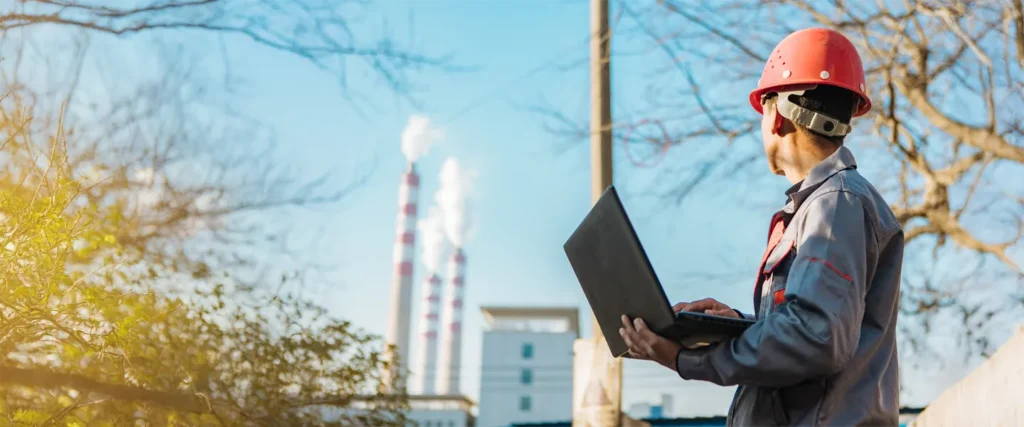A life cycle assessment (LCA) is an essential tool for companies aiming to reduce their carbon footprints, improve product sustainability and bolster their environmental, social and governance (ESG) performance. An LCA provides granular data on the potential environmental impacts of a product throughout its entire life cycle, from cradle to grave.
Performing an LCA gives companies key insights into the environmental impacts of the manufacturing, use and disposal of a product. Greenhouse gas (GHG) emissions that stem from those processes are also calculated. LCAs can help companies better understand their Scope 3 GHG emissions, which are the indirect emissions that come from their product portfolios and activities within the value chain. Given that Scope 3 emissions can account for the majority of a company’s carbon footprint, quantifying and reducing them will be key to reaching net zero.
But conducting LCAs can be a labor-intensive process, especially for companies that have large product portfolios and ambitious ESG and decarbonization goals. This is where LCA automation comes into play.
What Is LCA Automation and What Are the Benefits?
LCA automation is a technology that helps businesses conduct LCAs at scale. It provides real-time data on the environmental impacts and GHG emissions of a company’s entire product portfolio at a fraction of the time and cost associated with manual processes. Because performing an LCA for a single product can take as long as six months, many businesses have massive LCA backlogs that would take years to work through.
LCA automation enables companies to increase the number of LCAs they perform by a factor of 1,000. This means that professionals can focus on analyzing and improving the results of LCAs instead of conducting them.
When LCA processes are automated, companies can publish LCAs proactively instead of fulfilling requests as they come in. Customers and other stakeholders can then access LCAs on demand. This functionality is becoming especially important as the need for greater transparency in companies’ environmental impacts and carbon footprints grows.
With LCA automation, enterprises can ensure their LCA results are consistent, comparable and error-free. This is because LCA automation uses modeling that produces more reliable results compared to manual processes.
How Does LCA Automation Work?
LCA automation requires primary data that is correct and reliable. Primary data includes the materials that are used to manufacture a product, the composition of the product and the resources and energy used during its production. Primary data also includes a company’s supplier data.
The primary data needed for LCA automation can vary depending on the industry. For companies that manufacture electronics, the primary product data for the composition and structure of a product is required. This data can be found on the product’s bill of materials (BOM).
Production data is another critical component for LCA automation. This data includes all the steps needed to manufacture a product. Allocation rules within LCA automation software can help determine which manufacturing steps correspond to each product.
The third component of an LCA automation solution is the calculation engine that processes the data. It calculates the emissions produced and resources used in a company’s manufacturing processes. The calculation engine also processes environmental impact data. LCA automation pulls in this data automatically and performs calculations without the need for any manual entry. This is achieved through integration with a company’s existing IT infrastructure.
The calculation engine then delivers carbon footprint calculations at scale for the company’s entire product portfolio, broken down into Scope 1, 2 and 3 emissions. These results can be integrated into a company’s ESG reports and communicated to stakeholders.
Making the Business Case for LCA Automation
Not every company will have a business case to use LCA automation, nor the maturity level needed to implement it. For example, companies with smaller product portfolios may not need an automated solution for their LCAs.
To determine their maturity level, companies first need to understand what data they have and where it comes from. They then can decide what model they will use for their LCA calculations, and if LCA automation will meet their needs.
Companies can also seek third-party assistance to evaluate their readiness for LCA automation and help them reach the necessary maturity level. Companies that have never conducted an LCA will need consulting support at the beginning of the project.
Improving Product Sustainability with LCA Automation
To improve product sustainability, companies must have a better understanding of the entire life cycle and value chain of their product portfolios. LCA automation gives companies a more accurate picture of their product portfolios’ environmental impacts at a fraction of the time and cost of manual LCA processes.
And, as more companies are facing growing pressure to measure and report their carbon footprints, LCA automation will become a key tool for driving progress on ESG and decarbonization strategies in a way that is transparent, auditable and standardized.




